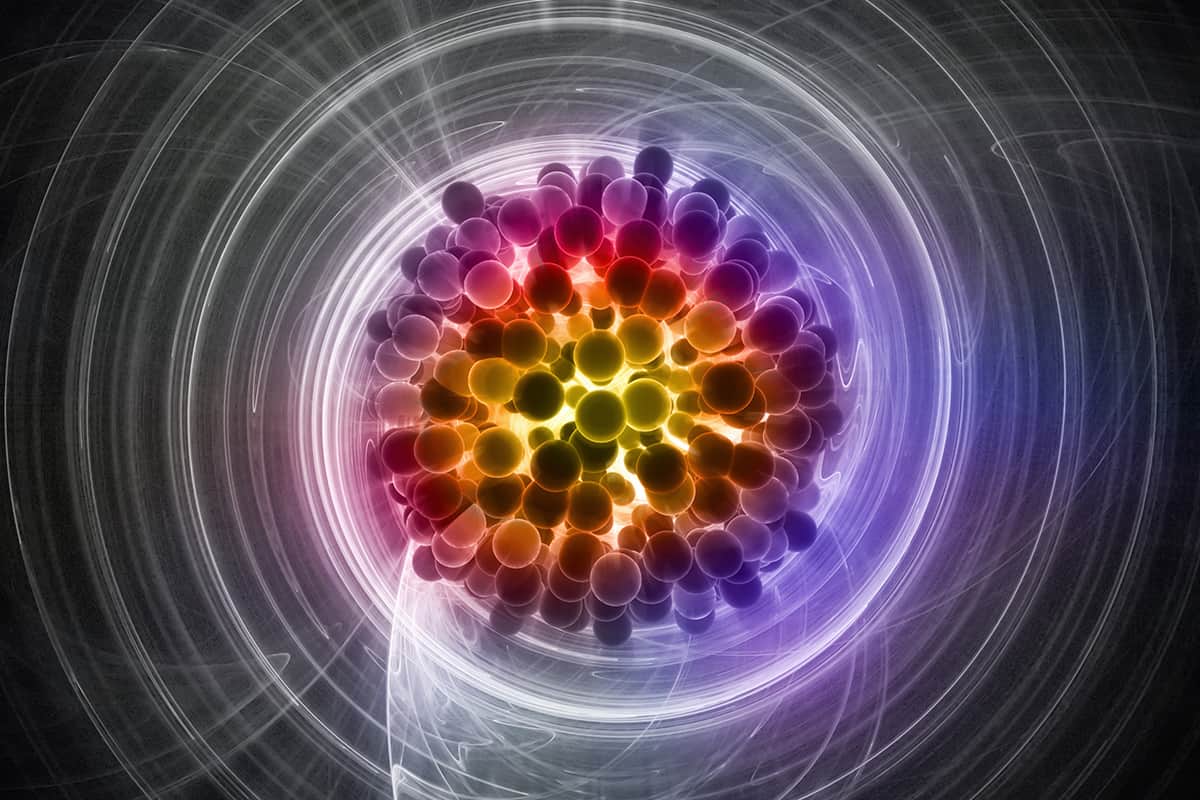
The study of quark-gluon plasma (QGP) is a fascinating field that delves into the mysteries of the fundamental building blocks of the universe. This unique state of matter, which is thought to have existed just milliseconds after the Big Bang, offers incredible insights into the nature of matter and the fundamental forces that govern the universe.In this article, we will explore 14 astounding facts about quark-gluon plasma. From its creation in high-energy particle collisions to its remarkable properties and implications for our understanding of the cosmos, each fact will shed light on the awe-inspiring nature of this enigmatic substance.So, buckle up and get ready to dive into the mind-boggling world of quark-gluon plasma, and discover the mind-bending phenomena found within this extraordinary state of matter.
Key Takeaways:
- Quark-gluon plasma is the hottest and most fleeting state of matter, formed in high-energy collisions. It helps us understand the early universe and the strong nuclear force.
- Scientists use “hard probes” and supercomputers to study quark-gluon plasma, collaborating internationally to unlock the secrets of the universe’s earliest moments.
The Hottest State of Matter
Quark-gluon plasma is the hottest state of matter ever observed, reaching temperatures of several trillion degrees Celsius. It is formed through high-energy collisions of heavy nuclei, such as those taking place in particle accelerators like the Large Hadron Collider.
A Short-Lived Existence
Quark-gluon plasma has an incredibly short lifespan. It only exists for a fraction of a second before it reverts back to a state of individual quarks and gluons due to the immense temperature and energy present.
Recreating the Early Universe
Scientists believe that quark-gluon plasma can help us understand the conditions that existed shortly after the Big Bang. By recreating these extreme temperatures and densities, researchers can study the fundamental particles and forces that govern the universe.
An Unusual State of Matter
Quark-gluon plasma is unique because quarks, which are usually confined within particles like protons and neutrons, are free to move around and interact with one another. This makes it a highly fluid and “perfect” liquid-like state of matter.
Color Charges and Gluons
Quark-gluon plasma gets its name from the fact that quarks carry a property known as color charge, which is analogous to the concept of color in everyday life. Gluons, on the other hand, are the particles responsible for holding quarks together via the strong nuclear force.
Evidence from Particle Collisions
Scientists detect the formation of quark-gluon plasma by observing the particles that emerge from high-energy collisions. The production of specific types of particles, such as heavy quarks or J/? mesons, indicates the presence of the plasma state.
The Perfect Liquid
Quark-gluon plasma is often described as a nearly perfect liquid because it flows with extremely low viscosity. This property has led to interesting comparisons with the properties of black holes and the way information is stored in them.
Expanding in All Directions
When quark-gluon plasma is formed, it expands rapidly in all directions. This expansion leads to the cooling and eventual breakup of the plasma state, allowing individual particles to form and propagate.
Probing with Hard Probes
To study the properties of quark-gluon plasma, scientists use “hard probes” such as high-energy jets or heavy quarks. These probes pass through the plasma and interact with its constituents, providing insights into its behavior.
A Transition Phase
Quark-gluon plasma is believed to exist in a transition phase between ordinary matter and a state where quarks and gluons are confined. This transition, known as the quark-hadron phase transition, is of great interest to physicists.
Studying the Strong Nuclear Force
Quark-gluon plasma allows scientists to study the strong nuclear force, one of the four fundamental forces in nature. By understanding how quarks and gluons interact in the plasma, researchers gain valuable insights into the nature of this force.
Quantum Chromodynamics and QGP
The study of quark-gluon plasma is closely related to the field of quantum chromodynamics (QCD), which describes the behavior of quarks and gluons. The understanding of QCD is further enhanced by studying the properties of the plasma state.
Simulating QGP with Supercomputers
Simulations using supercomputers play a crucial role in understanding the properties of quark-gluon plasma. These complex calculations help researchers model the behavior of particles in extreme conditions and validate their theoretical predictions.
Collaboration of International Researchers
Studying quark-gluon plasma requires collaboration among scientists from different countries and institutions. Research teams from around the world come together to share data, perform experiments, and push the boundaries of our understanding of the universe’s earliest moments.
Conclusion
In conclusion, the study of quark-gluon plasma is a fascinating field of physics that allows us to understand the behavior of matter under extreme conditions. Through experiments conducted at high-energy colliders and theoretical calculations, scientists have uncovered astounding facts about this unique state of matter. From its ability to recreate the early moments of the universe to its similarities with the behavior of black holes, quark-gluon plasma continues to captivate researchers and deepen our understanding of the fundamental forces and particles that make up the universe. As technology advances and new experiments are conducted, we can look forward to even more astounding discoveries in the realm of quark-gluon plasma.
FAQs
1. What is quark-gluon plasma?
Quark-gluon plasma is a state of matter that occurs at extremely high temperatures and densities. It is characterized by the liberation of quarks and gluons, which are the fundamental building blocks of protons and neutrons.
2. How is quark-gluon plasma studied?
Quark-gluon plasma is studied through experiments conducted at high-energy particle colliders, such as the Large Hadron Collider (LHC). Scientists collide heavy ions, such as gold or lead nuclei, at high speeds to recreate the conditions that existed microseconds after the Big Bang.
3. What can quark-gluon plasma tell us about the early universe?
Quark-gluon plasma allows scientists to study the state of matter that existed in the moments just after the Big Bang. By recreating these conditions in the laboratory, researchers can gain insights into the properties of the early universe and its evolution.
4. Are there any practical applications of studying quark-gluon plasma?
While direct practical applications of quark-gluon plasma research are not yet evident, the fundamental knowledge gained from studying this state of matter has contributed to advances in our understanding of particle physics and the behavior of matter under extreme conditions. It may have far-reaching implications for our understanding of the universe in the future.
5. How does quark-gluon plasma relate to black holes?
Quark-gluon plasma exhibits properties similar to those observed in black holes, such as the formation of event horizons and the emission of Hawking radiation. By studying quark-gluon plasma, scientists can gain insights into the behavior of black holes and the nature of gravity.
Quark-gluon plasma is a fascinating state of matter, but it's just one piece of the puzzle in understanding our universe. Dive deeper into the world of particle physics and explore the fundamental building blocks that make up everything around us. For a more detailed look at the forces governing these particles, take a closer look at quantum chromodynamics, the theory describing the strong interaction between quarks and gluons.
Was this page helpful?
Our commitment to delivering trustworthy and engaging content is at the heart of what we do. Each fact on our site is contributed by real users like you, bringing a wealth of diverse insights and information. To ensure the highest standards of accuracy and reliability, our dedicated editors meticulously review each submission. This process guarantees that the facts we share are not only fascinating but also credible. Trust in our commitment to quality and authenticity as you explore and learn with us.


